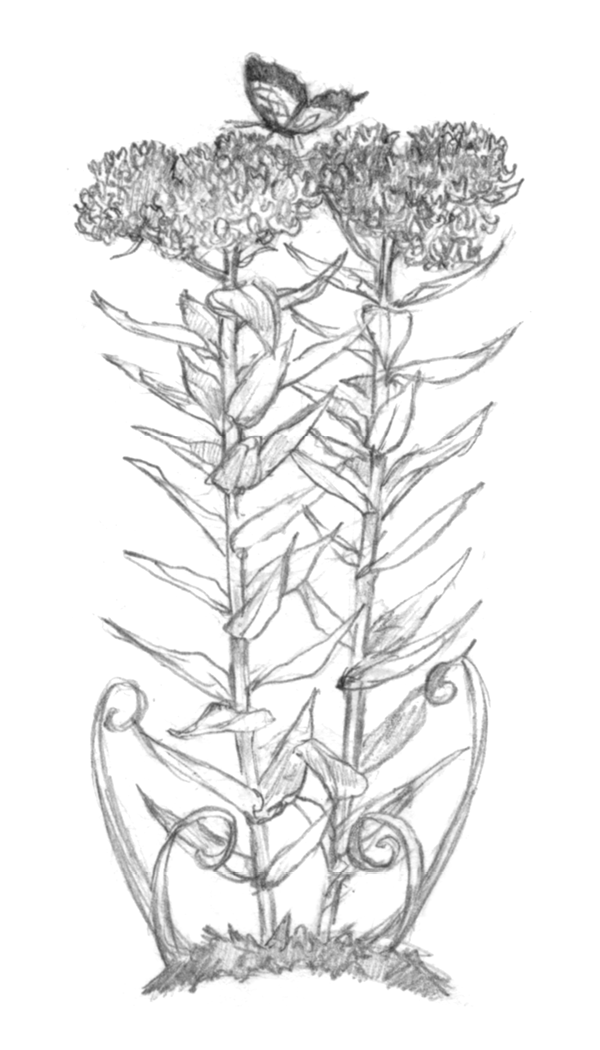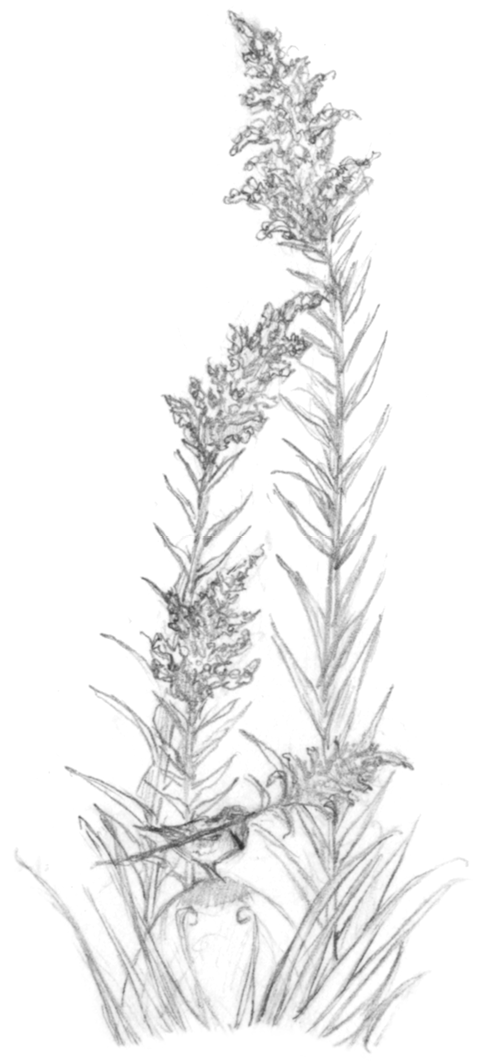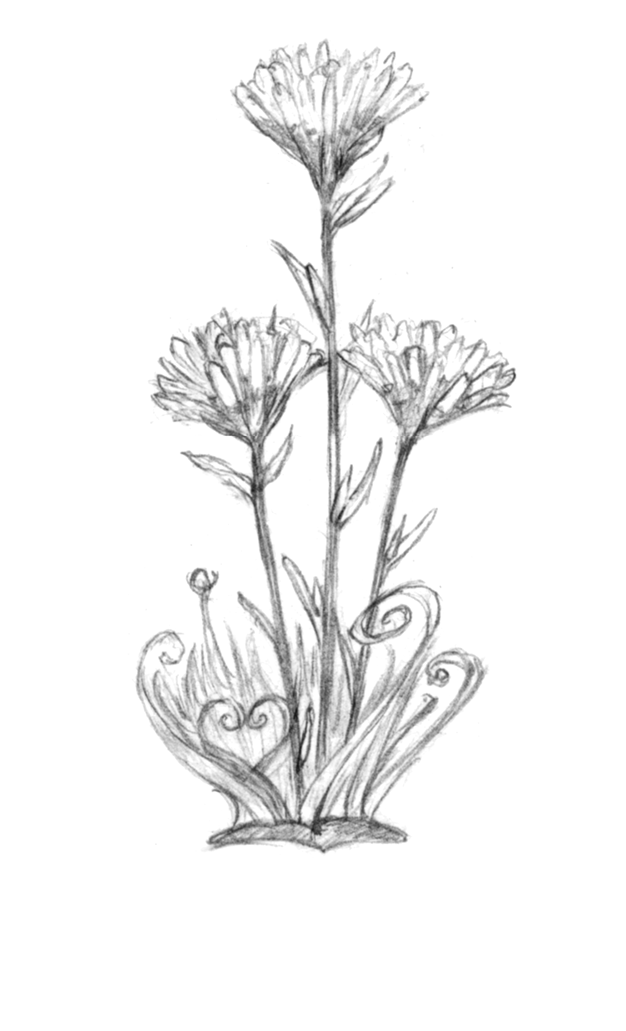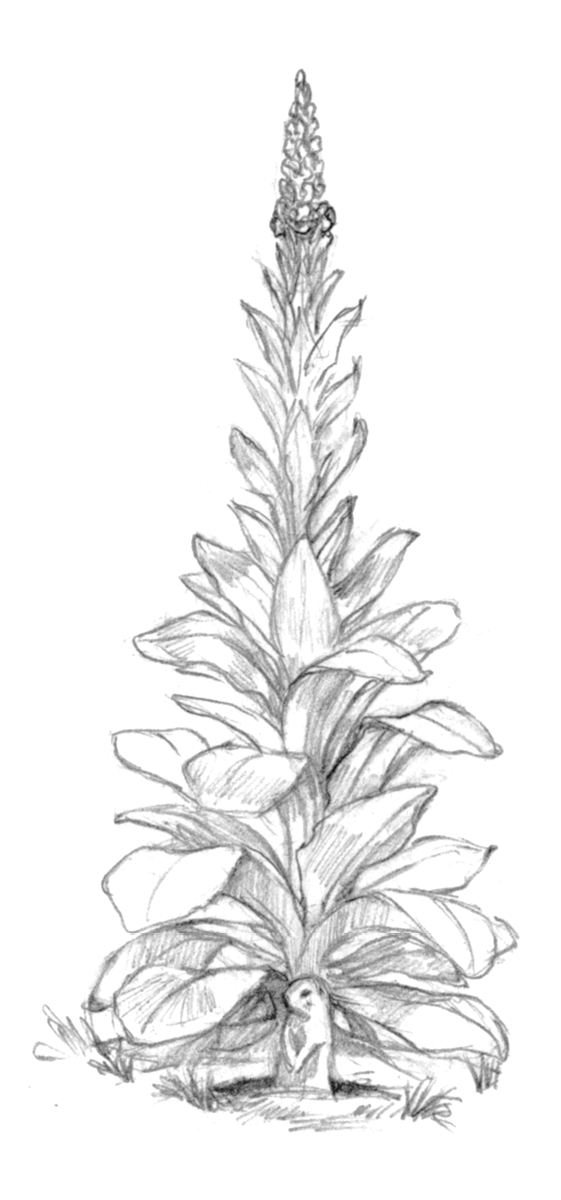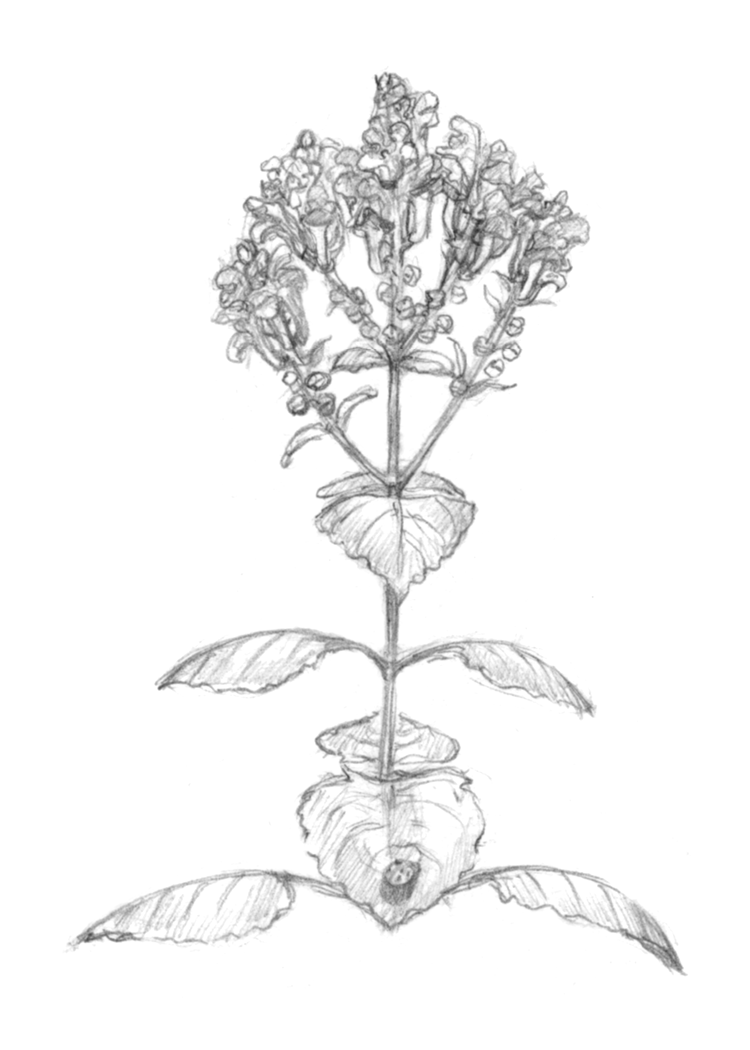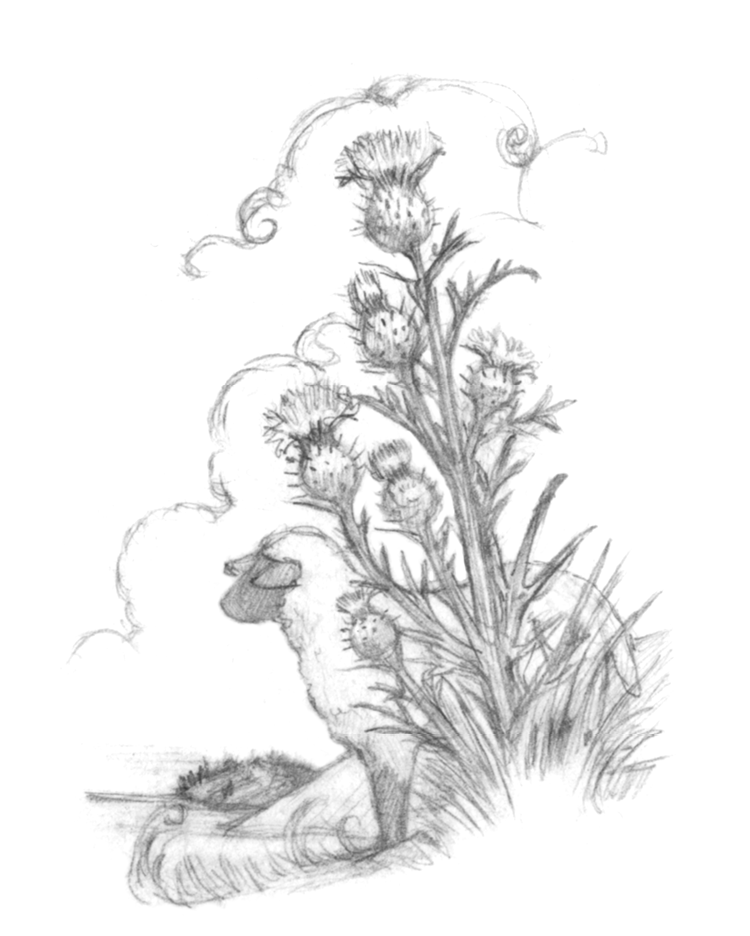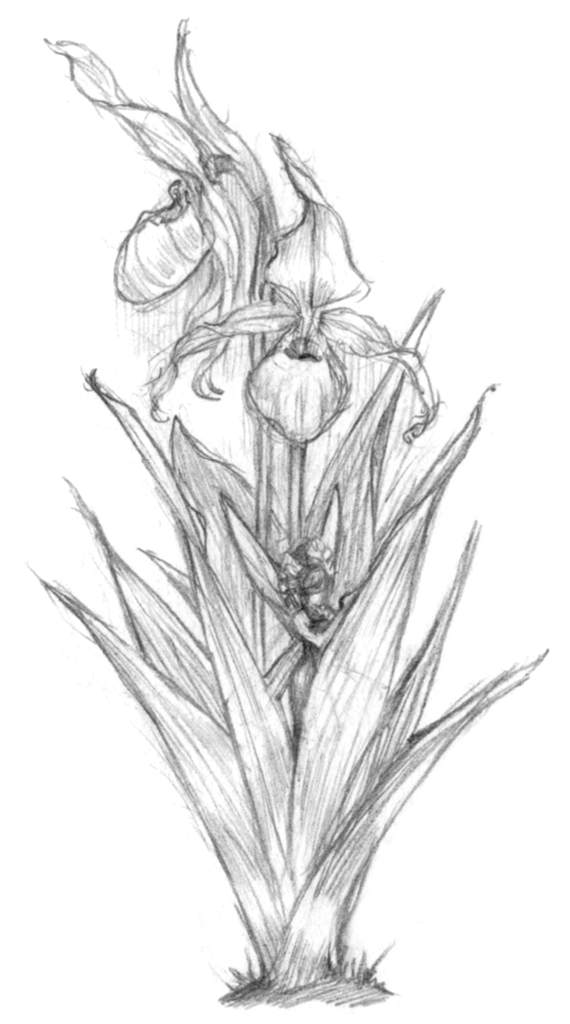Wildflowers and Witchery
To see a world in a grain of sand
and heaven in a wildflower,
hold infinity in the palm of your hand
and eternity in an hour.
william blake

For a Green Witch, the act of growing native plants and wildflowers in the garden connects them to the indigenous spirits of the land. Those plant energies and earth spirits have always been here, perhaps unnoticed and forgotten by us, until now. These elemental energies reside in all of the wildflowers naturally, because they are irrevocably linked together, plant to land and land to spirit.
When you bring wildflowers and native plants into your garden, you are introducing and inviting those harmonious energies and local spirits back into your own enchanting garden space or local sacred grove. Once you’ve acknowledged their powers or reacquainted them back into your life, the earth spirits are contented, and all their magickal blessings are showered upon you.
Working with wildflowers as a part of your green magick practices can be accomplished by one of two means: either with homegrown native plants (many varieties are readily available at your local nursery center these days) or with the wildflowers found blossoming outdoors. If there is a variety of wildflower that you have growing at home in your own gardens, then you may certainly gather a bit from your gardens for your spellwork. If, however, the plant is growing wild in nature, then leave the plant as you find it.
Do not gather, dig up, or cut wildflowers! Some of our native species are protected. In fact, if you are caught gathering flowers from the wild, you may face a hefty fine from your local conservation department. Gathering a single leaf or fallen twig from a common tree is one thing, but please leave the wildflowers that you encounter in the woodlands alone. Think of it this way: if you pick all of the plants blooming in the meadows and woods, then no one else is able to enjoy the wildflowers. In keeping with that theme, none of the spells in this particular chapter require you to harvest the wildflowers, only for you to work with them where you find them—be it in the garden or in the wild.
As you rediscover the magick of wildflowers, our little jewels of nature, stop and acknowledge their tenacity and beauty. If, for example, you should stumble across a little butterfly weed plant happily growing alongside the woods, then feel free to stop and admire it. Hunker down and take a good look at it. Stroke a finger gently over its orange flowers. Then, while you are there, ask the plant to lend its healing energy to your spellwork. Now, go ahead and be spontaneous: work a quick spell for healing.
The intuitive spellcrafting of the Natural Magician or Green Witch is an art that is almost forgotten. It requires no tools other than the sound of your voice, your personal magickal energies, and your own two hands. In other words, just do it.
To seal the spell and to signify that you have performed magick with the plant, take a small twig and trace a circle in a clockwise direction gently around the plant on the ground. The circle does not have to show; this is a symbolic gesture. Leave the area as you found it, with no traces that you were even there. The phrase “walk gently upon the earth” means just that. This is a basic tenant of working magick in the wild. As a Witch, you are a protector of the wild places. All Witches, Pagans, and Green Magicians know better than to disturb, deplete, or harm our natural resources.
The idea of green magick in the wild places was meant to encourage and inspire you. I want to persuade you, the reader, to work your magick quietly and intuitively in nature—whether this happens to be in the glades, meadows, woods, or in a quiet and secret space that you have created in your own yard is up to you.
If you think that you’d like to try growing a wildflower garden to add a little “wild” to your backyard Witch’s garden, then check seed catalogs and local nurseries for native plants. You can also check out these websites for wildflowers, native plants, and seeds:
- www.mowildflowers.net
- www.grownative.org
- www.mobot.org/default.asp
In the following Garden Witch’s dozen of wildflowers, I have given you both the common name and the botanical name (in italics). In this listing, you will find plant descriptions, approximate bloom times, and the folklore and magickal associations of the wildflower. There will also be an accompanying spell with each featured plant. Now, again, you may either work this in the garden or spontaneously, wherever you find the flower growing. Try picking up a local wildflower identification guide to have on hand, and start to appreciate and recognize your own native flora that are indigenous to your area.
Then write up a few of your own spells and flower fascinations for the wildflowers that grow in your neck of the woods. Dare to embrace the unsung art of the Green Witch. Be spontaneous and intuitive; create your own green witchery and natural magick.
Bewitching Wildflowers
First flower of their wilderness, star of their night,
Calm rising through change and through storm.
samuel gilman

Please take a moment and look over these directions for the wildflower spells. The following spells require no more supplies than the plants themselves, your voice, and your intentions. This is as basic and as practical as you are going to get. Oh, I imagine somewhere somebody is clutching their chest in horror and sputtering in disbelief. “Heavens above, there isn’t even a mention of astrological timing! No charm bags, no candles, no accompanying crystals … is she actually suggesting that no magickal tools be used at all?”
But perhaps there is an excellent reason for what I am teaching here. Do you have an inkling of what that might be? I am instead promoting the use of the most powerful “tools” that any Witch possesses. These tools would be your heart and your mind. After all, the most powerful accessories that any Witch owns are their intention and a desire to create a positive change.
Here is where you are going to stretch your wings a bit: the sky will not fall if you work magick without fancy wands and accessories, I promise you. Instead, I want you to sit down next to the chosen magickal plant, and spend some time with it. Hold your hands over the wildflower and see what sort of energy you experience from the plant. Then ground and center yourself. Next, you should raise your energy high and then repeat the spell verse.
As was suggested previously, in order to close these wildflower spells and to signify that you have performed magick with the plant, take a small twig and trace a circle in a clockwise direction gently around the plant on the ground. The circle does not have to show; this is a symbolic gesture. Ground any extra energy back into the earth, and leave the area as you found it, with no traces that you were even there. Trust that your green magick will work. And now, on to the wildflower spells.
Prairie Anemone (Anemone caroliniana)
This plant grows about twelve inches tall. The flowers are borne singly on a stem. Typically the five petals may be tinged with pink or pale purple. The leaves are deeply divided into sections about halfway up the stem. Its habitat is prairies and fields, where it prefers to grow in acidic soils. Bloom time is March through May.
A folk name for this flower is the windflower, from the Greek word anemone, which means “wind.” In the language of flowers, the anemone signifies truth, honesty, and faith. Magickal associations are health and hope. The anemone is also associated with the planet Mars and the element of fire. If you grow anemones at home in the garden, they will protect your property and your family.
A Windflower Protection Spell
The anemone is often called the windflower,
Now surround my home with your protection and power.
A Witch’s wildflower and magickal tool,
Aligned to fire and Mars so strong and true.
Close the windflower spell with these lines:
This protective wildflower spell is spun from the heart,
Worked for the good of all with a Green Witch’s art.
Note: You can easily change the words in the second line to “now surround me with protection and power” if you so choose.
Bluebell (Mertensia virginica)
These fleshy, showy plants can grow to two feet in height. Flowers are arranged in clusters, hanging bell-like, and are about one inch long. The buds start out pink and then change to blue as they open. The leaves of the bluebell are a bluish green in color and oval shaped. They grow in both sun and shade in bottomlands and hillsides of woods. Bloom time is April through May. The plant goes dormant in the month of June.
Flower folklore tells us that the bluebell stands for constancy and declares that “I am faithful.” It was, at one time, the national flower of England. The English variety of the bluebell is identified as Hyacinthodes non-scripta. It was also known as the wild hyacinth and grew abundantly in the medieval woodlands of England.
The bluebell is a faerie flower, and if you make an unselfish wish when you spot the first bluebells of the spring, the faeries are sure to grant your request. Magickal associations are good luck and truth. The astrological correspondence is Venus. Plus, it’s good to note that all true blue flowers are sacred to Venus and Aphrodite, the Greco-Roman goddesses of love and desire. If a person wears a bluebell, they are compelled to tell you the truth.
Garden Witch Tip: A friendly warning—working magick with the bluebell will show you the truth in any matter. Just remember you are asking for the truth, and you may discover more than you wish. With this spell, you are not asking to see what you want, you are asking for the truth, so keep that in mind.
Bluebell Spell to Know the Truth
Bluebell, bluebell, lend your power to mine,
Please show me the truth, here, now, at this time.
A Venus flower, you are faithful, constant, and true,
May I use this knowledge wisely in all that I do.
Close the wildflower spell with these lines:
This seeker’s wildflower spell is spun from the heart,
Worked for the good of all with a Green Witch’s art.
Butterfly Weed (Asclepias tuberosa)
Butterfly weed can grow up to three feet in height. Its flowers are displayed at the top of their stalks in clusters. Flowers are found in several shades of orange to red. They bloom from midsummer to fall. The leaves are fuzzy, narrow, and lance shaped. Butterfly weed is part of the milkweed family, so expect the pods and the pretty floating seeds to come in late summer–early fall. It can and will reseed itself quite easily. The plant’s habitat includes just about anywhere that has disturbed soil such as upland fields, prairies, glades, and the edges of woods. It prefers sun to light shade. It is also readily available as a nursery plant. Scout out a plant or two from your local nursery to add to your butterfly and magickal gardens.
This plant has many folk names such as swallow-wort and pleurisy root. Sacred to the Greek god Apollo, the name of this wildflower is taken from the Greek Asclepias, who was thought to have been both a physician and a god of healing. In the language of flowers, the butterfly weed stands for joy and gaiety. This plant’s magickal uses are health and energy. Its astrological influence is Jupiter, which also ties into healing and health issues.
A Healing Spell with Butterfly Weed
The bright orange butterfly weed bestows energy to spare,
Grant me health by the powers of water, fire, earth, and air.
By Apollo’s and Jupiter’s grace, help me to be strong,
May I live a charmed life that is happy, healthy, and long.
Close the wildflower spell with these lines:
This healing wildflower spell is spun from the heart,
Worked for the good of all with a Green Witch’s art.
Goldenrod (Solidago gigantea)
This is the state flower of Nebraska, and it has strong stalks that can reach two to seven feet and curve near the top into flower-bearing little branches of a bright golden-yellow. The leaves are narrow and resemble willow leaves. The leaves are longer at the bottom and shorter toward the top of the plant. Goldenrod lives in sunny spots, prairies, rocky woods, and along wet places such as rivers and ponds and blooms from July through October.
Goldenrod will sometimes volunteer into your garden. The birds often drop the seeds. Finches enjoy goldenrods, so let a little patch of goldenrod grow wild in your garden; it will bring good luck to your home. Rumor has it that if you hold a stem of the plant in your hand, the flower head will bend toward lost items. In Colonial America, goldenrod had several folk names, including blue mountain tea and woundwort.
In the language of flowers, goldenrod calls for caution, while other floral languages say it means encouragement. This is the bloom to work with if you want your secret love to remain undiscovered. Magickally, goldenrod has the association of prosperity and prophecy. Its astrological influence is Venus, and its associated element is air.
My Secret Love Spell with Goldenrod
This golden herb of Venus lend your power to mine,
May our love stay a secret between us for a time.
This flower means caution, but it encourages too.
Encourage my love and I to stay faithful and true.
Close the wildflower spell with these lines:
This lovely wildflower spell is spun from the heart,
Worked for the good of all with a Green Witch’s art.
Hedge Bindweed (Calystegia sepium)
Also known as the wild morning glory, this is a creeping, viney, and climbing plant. Its flowers are large and funnel shaped; they are usually white blushed with pink in the center, or they may be a pale pink with white stripes inside the throat. Bindweed flowers close up by noon on sunny days, just like their cousin, the blue morning glory. Bindweed’s leaves are described as being arrow-shaped with two squarish lobes. It is found in sun to part shade in fields, waste places, and roadsides. Bloom time is summer through early fall.
In the language of flowers, the wild morning glory promises to be “reassured by your affections.” Magickal uses for morning glory blooms include happiness and peace. If you grow the climbing flowers in your garden, you may also use the vines for bindings and protection. Stuff the vines in a jar along with dark-colored glass pebbles and pins to repel intruders and thieves. Bury the Witch jar on your property at a full moon.
The wildflower spell below is designed to use wherever you happen to find the wild morning glory growing—along your fence or up a sturdy perennial in the garden. (At the moment, I have bindweed growing up a decorative celestial metal and glass plant stake.) The bindweed’s astrological influence is Saturn, and the elemental correspondence is water.
Garden Witch Tip: Morning glories of all varieties are mildly poisonous. Make sure that you keep them out of reach of small children.
Banish Troubles with Bindweed
I banish my troubles with the help of hedge bindweed,
These vines will bind up trouble with all possible speed.
Climbing where they may, these wildflowers are lovely and sweet.
Any problems are bound by the power of three times three.
Close the spell up with these lines:
This protective wildflower spell is spun from the heart,
Worked for the good of all with a Green Witch’s art.
Scarlet Indian Paintbrush (Castilleja coccinea)
The scarlet Indian paintbrush grows anywhere from eight to fifteen inches tall. The flowers are inconspicuous and greenish yellow, hidden within the axils of brightly colored bracts, which can vary in color from red, orange, and yellow. The leaves are short and oblong with rounded ends. The stems are hairy and can vary in height. It lives in sunny spaces, fields, prairies, glades, and wet areas. This plant can tolerate both very dry and wet conditions. Bloom time is April through July.
The scarlet Indian paintbrush is a flower traditionally used to attract love. If this is grown in your garden, then carry a flower with you to promote loving vibrations. If you discover the flower in the wild, then do as suggested earlier and be sure to leave the plant for others to enjoy. Go ahead and work your magick with the plant then and there. A gentle touch or two of the plant won’t hurt anything. Please thank the plant for lending
you its energies. Remember to seal the spell as suggested previously by drawing a clockwise circle around its base. Its astrological influence is Venus; its elemental association is water.
Attracting Love with Indian Paintbrush
With your colorful bracts, attract a new lover to me,
With a touch of magick and the power of three times three.
May my love spell be blessed by the element of water,
By Venus, may they be filled with passion, life, and laughter.
Close the spell with these lines:
This loving wildflower spell is spun from the heart,
Worked for the good of all with a Green Witch’s art.
Mullein (Verbascum thapsus)
This prominent plant takes over disturbed land and can reach up to seven feet in height. The giant stalks of mullein are hard to miss. The flowers are yellow, and they will bloom from the bottom up on that long spike. Bloom time is May to September. The leaves of this plant look like gigantic lamb’s ears. They are oblong, silvery green, soft, and fuzzy. This plant is considered a biennial, which means that it will not produce a flower stalk until its second year. Mullein favors dry, sunny conditions in fields, waste areas, and embankments. Mullein is available as a nursery plant and makes a great addition to a children’s garden. The first year, the leaves are soft, huge, and a fuzzy silver. The second growing year, the flower stalk shoots straight up, so give it room. (I have had the flower stalks grow as tall as eight feet in my gardens.) Let mullein reseed itself if you want it to make another appearance in your garden for a third year.
Folk names include Aaron’s rod, hag’s tapers, hag’s torch, graveyard dirt, flannel plant, and velvet plant. In medieval times, the flower stalks were dipped in tallow and lit for torches (which explains the name hag’s tapers). Also on an interesting note, the early American settlers used the large, soft mullein leaves for diapers.
The astrological influence of mullein is Saturn, and the elemental correspondence is fire. Magickally, mullein was thought to ward off evil spirits. Mullein leaves are often dried and ground up for various spells. The dried leaves also can be used as a substitute for graveyard dirt.
Garden Witch Tip: This wild herb is a strong protection against evil, negativity, bad mojo, and astral nasties. With the term “astral nasties,” I’m not trying to sound cute—I literally mean random elementals, spirits, or thoughtforms that are hanging around and causing you grief. Maybe they were created by you—and maybe they were not. Want them gone? Here’s how.
Banishing Astral Nasties with Mullein
With mullein’s magick power, I ward and protect me,
I now push away all spirits, evil, and astral nasties.
With the strong influence of Saturn, this will never occur,
By the element of fire, I banish you forever.
Close the spell with these lines:
This protective wildflower spell is spun from the heart,
Worked for the good of all with a Green Witch’s art.
Prairie Rose (Rosa setigera)
Also called the climbing wild rose. In the Rosaceae (rose) family, there are over 3,300 varieties worldwide. The prairie rose climbs or forms sprawling bushes with arching, thorny canes. The flowers are soft pink, heavily scented, and usually three inches across. The blooms are single with five petals and many bright yellow stamens. Bloom time is May through July. The leaves are set up into three leaflets on older stalks and in groups of five on newer growth. These roses do produce hips that will turn a beautiful red in the fall. Find this plant in sun and part shade, moist fields, prairie thickets, streamside, and along roads and fence rows.
Garden Witch Tip: If you’d like to grow some of these carefree beauties in your yard, look for roses that are called landscape roses or “nearly wild.” These modern varieties of roses will produce the same kind of old-fashioned blooms as the prairie rose.
The old flower folklore suggests that the wild rose symbolizes maidenly beauty. It says that the recipient of this wildflower is “as bonny and virginal as this pure bloom.” In natural magick, the rose and its petals are used quite often for various spells and charms, including love, healing, and protection. (Please refer to my book Garden Witchery for more information on the magick of all the various colors of roses.) It is important to note that the five-petaled wild rose is an ancient symbol of the Goddess. The astrological correspondence for the wild rose is the same as the hybrid rose: it is Venus, and the elemental association is water.
A Fragrant Call for the Goddess’s Blessings
May the Goddess and all her blessings shine down on me,
Whether I am on land, in the sky, or on the sea.
A five-petaled rose is a symbol of her power,
May my life be as sweet as this magickal flower.
Close the Goddess blessing with these lines:
This fragrant wildflower spell is spun from the heart,
Worked for the good of all with a Green Witch’s art.
Skullcap (Scutellaria incana)
Hoary skullcap grows two to three feet in height and is part of the mint family. This particular variety of skullcap grows from the midsections of the country to the eastern coast of the United States. Hoary skullcap grows as far south as Texas and as far north as New York state (and all the states in between, all the way to the East Coast). The stems of the hoary skullcap are short, branched, and covered in fine grey hair. The flowers are purplish blue and clustered together in an oblong grouping.
There is also another variety of wild skullcap that is common throughout the United States and Britain, and it is called Scutellaria galericulata. Known as the Common Skullcap, it is often called Marsh Skullcap or Hooded Skullcap. This plant grows one to three feet in height and is common in meadows, marshes, and wet shores. All of the skullcap’s purple-blue flowers are a half-inch long and start to bloom from the bottom up from June through September. The plant’s leaves are oval shaped with pointed ends. This plant likes full sun to partial shade in wooded slopes, alongside streams, and in rocky, open woods.
Garden Witch Tip: In the home garden, skullcap performs best in rich, fertile, and moist soil. Skullcap has to have lots of sun and moist soil for the best growing success.
Magickally, skullcap is used to promote relaxation and peace. The astrological association is Saturn; the elemental correspondence is water. It is also said to protect your man from the wiles of other women. Here is a wildflower spell to use for just such an occasion.
Skullcap Spell to Keep a Good Man
They say that a good man is hard to find,
So stay far away from this man of mine.
By the banishing powers of Saturn, you will move along,
You shall not ruin our love, for it is faithful, true, and strong.
Close the spell with these lines:
This loving wildflower spell is spun from the heart,
Worked for the good of all with a Green Witch’s art.
Spiderwort (Tradescantia longipes)
Also known as the wild crocus, spiderwort is a low-growing plant six to eight inches tall, with bright purplish blue trilobed flowers. There are also some varieties that are magenta, but blue is the most common. The flower petals are arranged in the shape of a triangle and often bloom together in small clusters. Bloom time is April and May. The leaves are grasslike with a wide crease, or vein, down the center. This plant likes acidic soils and shade to part shade in wooded slopes and valleys. Spiderwort is another easy to find and popular wildflower at most nurseries. Nursery varieties may grow taller than their wild cousins.
Spiderwort adds a little mystery and wildness to your part-shade gardens. They got their name (wort being an old word for “herb”) because they were mistaken for another plant that was thought to cure the bite of a poisonous spider. In reality, they do not cure spider bites—and they don’t attract spiders either.
In the language of flowers, the spiderwort confesses that it feels “respect but not romantic love.” Magickally, spiderwort is associated with both the planet Venus and the goddess Venus/
Aphrodite (as are all true blue flowers), and the tripetaled spiderwort flower may be easily worked into spells for friendship and to help you gain respect from others, which can come in handy when you are applying for a new job or looking to be accepted by a new group.
Winning Acceptance from a New Group
By the three blue petals of the spiderwort plant,
I’ll be accepted by this group/job that I so want.
A triangle of magick the little petals do form;
In the best possible way, their feelings toward me shall warm.
Close the spell with these lines:
This simple wildflower spell is spun from the heart,
Worked for the good of all with a Green Witch’s art.
Thistle (Cirsium vulgare)
The thistle is part of the daisy family. This particular variety is commonly known as the bull thistle, plumed thistle, or the roadside thistle. Thistle may grow up to seven feet in height. The upper stems and branches are covered in thorns and prickles. The flower heads are pale lavender to a rose color. Bloom time is from June through September. There are many varieties of thistles, and they are easy to spot, as the spines grow right up to the flower-heads. The leaves are deeply lobed, silvery green, and hairy and spiny as well. Find these plants in fields, waste places, and roadsides.
The thistle is a common wildflower throughout North America, Europe, Asia, and North Africa. Another thistle variety, Onopordum acanthium, commonly called the Scotch thistle, is the national flower of Scotland. In the language of flowers, the thistle symbolizes simplicity and independence. If you grow thistles in the garden, you will encourage protection, strength, and healing.
Magickally, these plants are used to break hexes and to ward off negativity and evil. Their astrological influence is Mars, and they are aligned with the element of fire.
Garden Witch Tip: Thistles do tend to volunteer in the garden from time to time. As long as you don’t have small children running around, I would encourage you to let one or two grow wild in an out-of-the-way place and enjoy the protective qualities of this herbal wildflower. These wildflowers also attract goldfinches and butterflies. Thistles brought into the house from the garden are used to break spells and malevolent charms.
Breaking Hexes with Thistle
By the protective magick of thorns and prickles,
I break all hexes with the help of the thistle.
By fire’s bright power all evil must flee,
And as I do will it, then so must it be!
Close the spell with these lines:
This protective wildflower spell is spun from the heart,
Worked for the good of all with a Green Witch’s art.
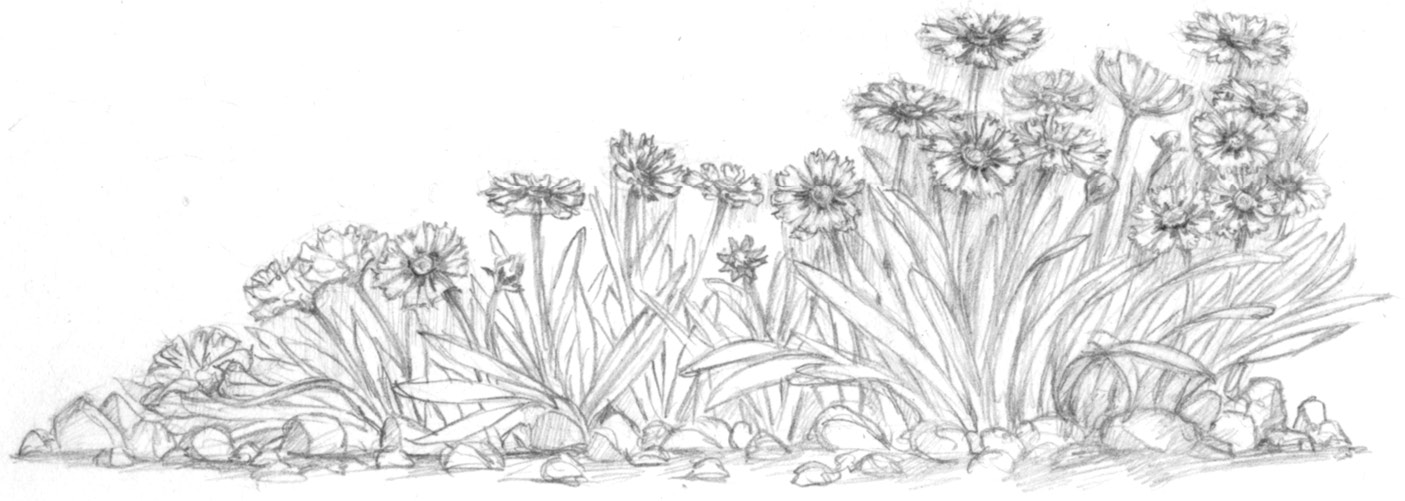
Tickseed Coreopsis (Coreopsis lanceolata)
The coreopsis is part of the daisy family, and its several stems, up to three feet in height, make for a noticeable glade species. The flowers are bright yellow, with large heads about two inches across, and the ends of the petals are jagged. Bloom time runs from April through June. Leaves are narrow, undivided, and mostly arranged at the bottom of the stems. Coreopsis loves the sun, and you can find it growing in prairies, glades, and along roadsides.
Tickseed coreopsis is now widely available as a nursery plant. This perky little golden perennial attracts butterflies and brightens up many a flower garden. It is also drought tolerant, and it is the official state wildflower of Florida. When grown in the garden, they make great cut flowers, and they are not too fussy about soil types. At home in my gardens, the coreopsis blooms off and on through September, while the heaviest blooming occurs in late May through June.
In the language of flowers, the coreopsis is a symbol for a person who is always bright and cheerful. Astrological association is the sun, and the elemental association is fire. Magickally, you could work with the coreopsis for antidepression spells and to bring about good luck and better days.
Banishing the Blues with Coreopsis
May these bright yellow flowers brighten up my days,
Banishing the blues and chasing sadness away.
Now encourage good cheer, smiles, and laughter,
May I be content forever after.
Close the spell with these lines:
This cheerful wildflower spell is spun from the heart,
Worked for the good of all with a Green Witch’s art.
Yellow Lady’s Slipper (Cypripedium pubescens)
The yellow lady’s slipper is part of the orchid family. They are rare and exotic wild orchids and can grow up to two feet tall. These flowers have brown-bronze, twisting flags, one upright and the others on either side of the yellow “slipper.” There are also pink and white varieties of lady’s slippers as well. Other common names for this romantic wildflower include whippoorwill’s shoe, yellows, slipper root, and Indian shoe. Bloom time for this beauty is April through June. The leaves are bright green and prominently veined; the stem is long, sharply tapered, and fuzzy. The lady’s slipper prefers acid soil in part shade to shade and in upper and middle elevations of north- and east-facing wooded slopes.
According to old folklore, wherever Cinderella dropped her shoe, that’s where lady’s slippers will grow. (Apparently Cinderella was running amok in the forests and woodlands in her ball gown.) In the language of flowers, the lady’s slipper sweetly stands for a beautiful, whimsical person or capriciousness. Magickally, the energies of the lady’s slipper are often worked with protection magick.
If you should find such a rare flower growing wild, consider yourself very fortunate indeed. Do not disturb the area, and leave the lady’s slipper be. Just quietly enjoy the experience. The nature spirits surely must be watching over you to have given you such a gift. The lady’s slipper’s astrological influence is Saturn, and the elemental association is water.
Faerie Blessing with the Lady’s Slipper
A rare wild orchid is the lady’s slipper,
May the nature spirits hear me and come hither.
Please bless me now, with good fortune and wisdom true.
I’ll always have respect for nature and for you.
Close the spell with these lines:
This faerie wildflower spell is spun from the heart,
Worked for the good of all with a Green Witch’s art.
Closing Thoughts on
Wildflower Witchery
Where Cinderella dropped her shoe,
’Tis said in fairy tales of yore,
T’was there the first lady’s slipper grew
And there its rosy blossom bore …
elaine goodale eastman

Remember to walk softly upon the earth as you work your green magick with wildflowers. These flowers are intricately connected with the spirits of the land, and those nature spirits will be watching you carefully to see how you treat the wildflowers as you work magick with them. They are indeed little natural treasures, so value them, respect the land, and harm nothing in nature as you work your green magick to create a positive change.


